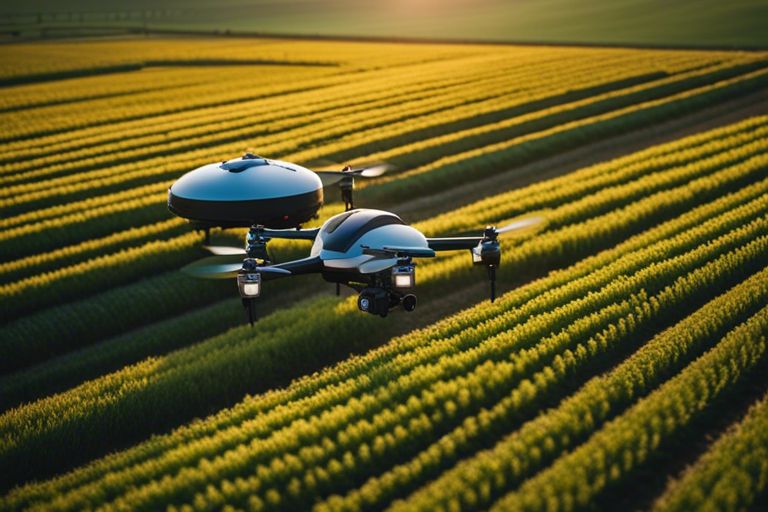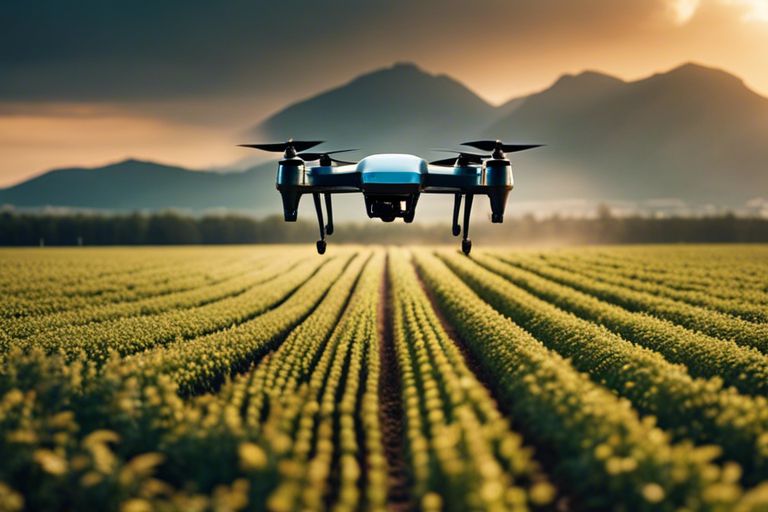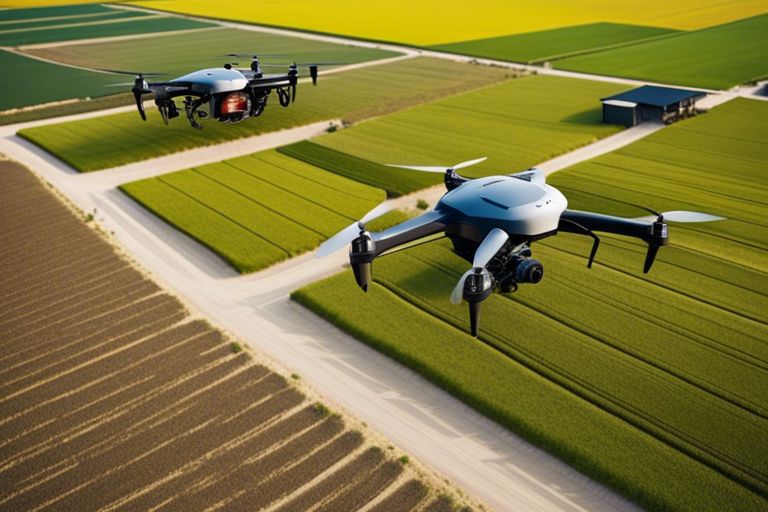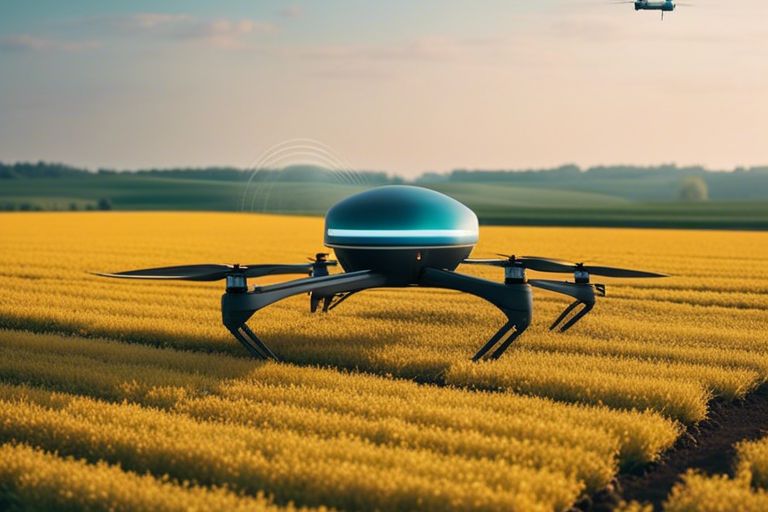There’s a technological revolution taking root in the age-old field of agriculture, and its name is Artificial Intelligence. From precision farming to crop monitoring, AI is revolutionizing how we cultivate the land. In this informative piece, we research into the applications of AI in agriculture, exploring how it is boosting yields, maximizing efficiency, and shaping the future of farming.

Key Takeaways:
- Increased Yields: Artificial Intelligence in agriculture can help optimize crop yields through precision farming techniques that monitor and adjust factors such as water usage, soil nutrients, and pest control.
- Enhanced Efficiency: AI applications in agriculture streamline processes like planting, harvesting, and monitoring crop health, leading to increased efficiency and reduced labor costs.
- Sustainability Benefits: By enabling data-driven decision-making, AI in agriculture promotes more sustainable practices by minimizing resource waste and environmental impact while maximizing crop output.
The Role of AI in Modern Agriculture
While traditional farming methods have served humanity for centuries, the integration of artificial intelligence (AI) is revolutionizing modern agriculture. AI technologies are being employed across various aspects of farming, enhancing efficiency, productivity, and sustainability. From precision farming to livestock monitoring, AI is reshaping the way we cultivate crops and raise animals.
- How can AI enhance crop yields in agriculture?
- What are the benefits of using AI for precision farming?
- In what ways is AI being utilized for crop management?
- How does AI improve efficiency in livestock monitoring?
Precision Farming and Crop Management
The implementation of AI in precision farming has enabled farmers to make data-driven decisions and optimize resource allocation. By analyzing various factors like soil quality, weather patterns, and crop health, AI systems provide insights that help farmers enhance crop yields while minimizing inputs such as water and fertilizer.
- How does AI assist farmers in making more precise planting decisions?
- What role does AI play in optimizing irrigation practices?
- How can AI help in early detection of crop diseases?
- In what ways does AI contribute to reducing chemical usage in agriculture?
Livestock Monitoring and Health Analysis
The integration of AI in livestock monitoring offers farmers the ability to track animal behavior, health, and overall well-being in real-time. By employing sensors and algorithms, AI systems can detect anomalies early, allowing for timely interventions to prevent illness outbreaks and ensure the welfare of livestock.
- How does AI facilitate continuous monitoring of livestock activities?
- What benefits does AI bring to disease detection in livestock?
- In what ways can AI enhance breeding programs for livestock?
- How does AI aid in optimizing feeding regimes for livestock?
Analysis
Livestock Monitoring and Health Analysis
Livestock monitoring systems powered by AI offer a comprehensive overview of individual animal health and behavior, allowing farmers to proactively manage their livestock. AI algorithms analyze data from various sensors to detect patterns indicative of health issues, enabling prompt veterinary care and improved overall herd management.
- How does AI contribute to reducing mortality rates in livestock?
- What role does AI play in predicting and preventing disease outbreaks in herds?
- In what ways can AI aid in improving breeding outcomes for livestock?
- How does AI help farmers in managing the nutritional needs of individual animals?
Crop
AI systems in crop monitoring are valuable tools for farmers to assess plant health and growth progression. By utilizing data from drones, satellite imagery, and ground sensors, AI can identify areas of concern such as pest infestations, nutrient deficiencies, or water stress. This real-time monitoring enables farmers to intervene promptly and precisely, leading to improved crop health and increased yields.

AI-Powered Decision Making
Some of the key applications of AI in agriculture involve leveraging predictive analytics for weather and climate forecasts, optimizing resource allocation and supply chain management, and enhancing decision-making processes at every stage of farming operations.
1. How can AI help farmers make better decisions based on weather patterns?
2. Using AI for real-time crop management decisions.
3. Predicting crop yields with AI technology.
4. Improving irrigation strategies with AI-powered insights.
Predictive Analytics for Weather and Climate
Making informed decisions in agriculture heavily relies on accurate weather and climate forecasts. AI algorithms can analyze historical data, current weather patterns, and various climatic factors to provide farmers with predictive insights for better crop management practices.
1. How can AI predict weather patterns for crop planning?
2. Using AI to mitigate risks in agriculture based on climate predictions.
3. Predictive analytics for pest control using AI technology.
4. Enhancing crop resilience with AI-driven climate adaptation strategies.
Optimizing Resource Allocation and Supply Chain
Making strategic decisions on resource allocation and supply chain management can significantly impact agricultural productivity. AI tools can analyze data on soil quality, water availability, and market demands to help farmers optimize resource allocation, streamline distribution processes, and reduce wastage.
1. How can AI optimize resource allocation for maximum yield?
2. Using AI for efficient inventory management in agriculture.
3. Predictive analytics in agriculture supply chain optimization.
4. Enhancing sustainability in agriculture through AI-driven resource allocation.
On the frontlines of modern farming, AI technologies are revolutionizing how resources are allocated and supply chains are managed. By leveraging advanced algorithms and data analytics, farmers can make data-driven decisions to optimize crop production, reduce waste, and enhance overall operational efficiency.
1. How can AI improve crop yield through optimized resource allocation?
2. Using AI to streamline agricultural supply chain logistics.
3. Predictive analytics for resource efficiency in farming.
4. Enhancing sustainability in agriculture through AI-driven supply chain management.
Chain management in agriculture involves complex networks of activities from production to consumption. AI technologies help streamline these processes by analyzing data on crop growth, demand forecasts, transportation logistics, and market trends. By optimizing the supply chain, farmers can reduce costs, improve product quality, and meet consumer demands more effectively.
1. How can AI enhance supply chain efficiency in agriculture?
2. Using AI for demand forecasting and supply chain optimization.
3. Improving distribution networks in agriculture with AI technology.
4. Enhancing transparency and traceability in agricultural supply chains through AI.
Automation and Robotics in Agriculture
Unlike traditional farming methods, the integration of automation and robotics in agriculture is revolutionizing the industry. These technologies are reshaping farming practices and driving efficiency to new heights. With the help of AI, robots, and automation tools, farmers can now optimize their operations, increase yield, and reduce waste significantly.
- How are robots transforming modern agriculture?
- What are the benefits of using automation in farming?
- How is AI enhancing robotic systems in agriculture?
Autonomous Farming Equipment and Drones
On the forefront of agricultural innovation are autonomous farming equipment and drones. These technologies are empowering farmers by offering real-time insights into crop health, soil conditions, and pest infestations. Drones equipped with AI algorithms can quickly analyze vast stretches of land, enabling farmers to make informed decisions promptly.
- What are the advantages of using drones in farming?
- How do autonomous tractors contribute to efficient farming operations?
- In what ways can AI improve the precision of agricultural drones?
Streamlining Farm Operations and Labor Efficiency
On the path to modernization, automation and robotics are streamlining farm operations and enhancing labor efficiency. Tasks that were once labor-intensive and time-consuming can now be automated, allowing farmers to focus on more strategic aspects of their operations. This shift leads to increased productivity, reduced operational costs, and better utilization of resources.
- How can automation improve the efficiency of planting and harvesting?
- What role do robotics play in minimizing manual labor in agriculture?
- In what ways can AI enable predictive maintenance for farming equipment?
Farming operations are evolving with the integration of automation and robotics, paving the way for a more sustainable and productive agricultural future. With the power of AI in agriculture for smart farming, farmers are embracing these technologies to boost yields, enhance efficiency, and ensure a more secure food supply for the growing global population. Visit Power of AI in Agriculture for Smart Farming to dive deeper into the transformative impact of AI in agriculture.

Challenges and Future Directions
Not surprisingly, the integration of AI in agriculture comes with its own set of challenges and opportunities for improvement. Here are some chatGPT prompt samples related to this subsection:
- How can AI help address the challenges faced by modern agriculture?
- What are the key obstacles to implementing AI solutions in farming?
- What are the potential future developments in AI technology for agriculture?
- Can AI assist in mitigating the effects of climate change on agriculture?
Addressing Data Quality and Security Concerns
To explore deeper into the importance of data in agriculture, check out Big Data Comes to Dinner. Implementing AI in agriculture raises concerns about data quality and security. Here are some chatGPT prompt samples related to this subsection:
- How can farmers ensure the accuracy and reliability of data used by AI systems?
- What measures can be taken to protect agricultural data from cyber threats?
- How important is data privacy in the context of AI-driven agriculture?
- Can blockchain technology enhance data security in agricultural AI applications?
Ensuring Accessibility and Adoption for Small-Scale Farmers
Challenges persist in ensuring that small-scale farmers can access and adopt AI technologies effectively. Here are some chatGPT prompt samples related to this subsection:
- How can AI solutions be tailored to meet the needs of small-scale farmers?
- What barriers hinder the adoption of AI technology among small-scale agricultural producers?
- What role can governments play in promoting AI adoption in small-scale farming?
- Are there cost-effective AI solutions available for smaller farming operations?
An integral aspect of ensuring the widespread adoption of AI in agriculture is addressing the unique challenges faced by small-scale farmers who may lack the resources or technical expertise to leverage these technologies effectively. Tailoring AI solutions to suit the specific needs and constraints of smaller agricultural operations, providing training and support, and offering cost-effective options are crucial steps in democratizing the benefits of AI across the agricultural landscape.
Security of data and infrastructure is paramount in the adoption of AI in agriculture. With the increasing digitization of farming operations, protecting sensitive information and ensuring the reliability of AI systems are critical. Collaborative efforts between farmers, technology providers, and regulatory bodies are vital to establish robust data security protocols and safeguard the agricultural sector against potential threats.
Final Words
With these considerations in mind, it is evident that AI has the potential to revolutionize the agricultural sector by boosting yields and efficiency. By harnessing the power of artificial intelligence, farmers can make more informed decisions, optimize resources, and ultimately increase productivity. As technology continues to advance, the integration of AI in agriculture will undoubtedly play a crucial role in addressing the challenges of feeding a growing global population while minimizing environmental impact.
FAQ
Q: How is AI revolutionizing the agricultural industry?
A: AI is revolutionizing the agricultural industry by helping farmers make data-driven decisions, optimize crop yields, reduce resource wastage, and enhance overall efficiency in farm operations.
Q: What are some key applications of AI in agriculture?
A: Some key applications of AI in agriculture include precision farming, crop monitoring, predictive analytics for weather forecasting and pest control, automated harvesting, and livestock management.
Q: How does AI contribute to boosting yields and efficiency in agriculture?
A: AI analyzes vast amounts of data collected from sensors, drones, satellites, and other sources to provide insights into soil quality, crop health, irrigation needs, and more. This information helps farmers optimize their operations, leading to increased yields, reduced costs, and improved sustainability.

Recent Comments